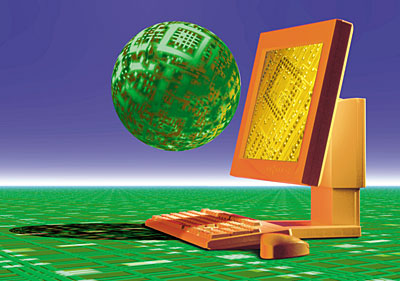Java Mobile Graphics
Feedsee Mobility : Java Mobile Graphics : Aplix JBlend integrates with Nvidia Goforce Handheld Gpus
 In 2006, Aplix cooperated with NVIDIA to optimize handheld Java graphics solutions for mobile content providers, carriers, and OEMs. Aplix integrated its JBlend Java platform with NVIaDIA's GoForce handheld GPUs and JSR solutions from Hybrid and third-party partners to optimize Java and graphics performance for mobile devices. NVIDIA distributed this Java graphics solution to its network of mobile content developers and both companies promoted the package to OEM customers. The agreement covers M3G - Mobile 3D Graphics API for J2ME, Java bindings to OpenGL ES, and Java bindings to SVG for scalable vector graphics.
In 2006, Aplix cooperated with NVIDIA to optimize handheld Java graphics solutions for mobile content providers, carriers, and OEMs. Aplix integrated its JBlend Java platform with NVIaDIA's GoForce handheld GPUs and JSR solutions from Hybrid and third-party partners to optimize Java and graphics performance for mobile devices. NVIDIA distributed this Java graphics solution to its network of mobile content developers and both companies promoted the package to OEM customers. The agreement covers M3G - Mobile 3D Graphics API for J2ME, Java bindings to OpenGL ES, and Java bindings to SVG for scalable vector graphics.
The improvements in Java mobile graphics over the years can be attributed to a series of enhancements in both hardware and software realms. Here's a brief overview:
- Increased Device Capabilities: Over time, mobile devices have become much more powerful, with multi-core processors, increased memory, and advanced graphic processing units (GPUs). This has provided a solid platform for Java applications to leverage for more complex and visually impressive graphics.
- Introduction of Java ME (Micro Edition): Java ME was designed specifically for mobile devices and embedded systems. It introduced APIs designed for limited resource environments, including the Mobile 3D Graphics API for rendering both 2D and 3D graphics.
- LWUIT (Lightweight UI Toolkit): This library was introduced by Sun Microsystems to make creating rich, compelling user interfaces in Java ME applications easier. It provided a range of UI components and supported theming, allowing developers to easily customize the look and feel of their applications.
- MIDP (Mobile Information Device Profile): MIDP 2.0, and later MIDP 3.0, came with improved APIs for 2D graphics and gaming, contributing to a better mobile graphics experience in Java.
- JSR 184 (Mobile 3D Graphics API for Java ME): This API provided a robust, flexible environment for mobile 3D graphics, enabling developers to build sophisticated, high-quality 3D games and applications.
- JavaFX Mobile: While it didn't achieve widespread adoption, JavaFX Mobile was designed to enable rich, consistent user experiences across a wide range of devices. It offered powerful features for 2D and 3D graphics, UI controls, and media playback.
- Android and Java: While Android doesn't use Java ME, it does use Java and its own set of APIs. Android provides extensive support for 2D and 3D graphics, allowing developers to create visually impressive apps. Android's graphics capabilities have continually improved over the years, with each new version of Android and its associated SDK adding further features and performance improvements.
The future of Java mobile development is currently primarily in Android. Traditional Java ME and related technologies have largely been superseded, though they may still be used in certain embedded systems contexts. Android remains the primary platform for mobile development with Java.